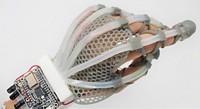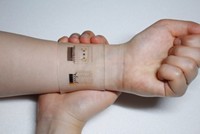Advertisement
Grab your lab coat. Let's get started
Welcome!
Welcome!
Create an account below to get 6 C&EN articles per month, receive newsletters and more - all free.
It seems this is your first time logging in online. Please enter the following information to continue.
As an ACS member you automatically get access to this site. All we need is few more details to create your reading experience.
Not you? Sign in with a different account.
Not you? Sign in with a different account.
ERROR 1
ERROR 1
ERROR 2
ERROR 2
ERROR 2
ERROR 2
ERROR 2
Password and Confirm password must match.
If you have an ACS member number, please enter it here so we can link this account to your membership. (optional)
ERROR 2
ACS values your privacy. By submitting your information, you are gaining access to C&EN and subscribing to our weekly newsletter. We use the information you provide to make your reading experience better, and we will never sell your data to third party members.
Analytical Chemistry
Forget wristbands. Try wearable health monitors instead
3-D printed device uses an infrared sensor to make measurements from the eardrum, also acts as a hearing aid
by Celia Henry Arnaud
July 31, 2017
| A version of this story appeared in
Volume 95, Issue 31
Even if you don’t wear a Fitbit yourself, you probably know someone who does. Most wearable health monitors of that ilk are designed to be worn as a patch, wristband, or headband. But some health indicators could benefit from being measured in other ways. Take, for example, body temperature. Measurements of body temperature through the skin can be skewed by environmental conditions. Other, more accurate measurement methods are invasive and not suitable for wearable devices. A team led by Ali Javey of the University of California, Berkeley, has now designed a device that can be worn over the ear like a headphone and uses an infrared sensor that fits in the ear to monitor core body temperature from the eardrum in real time (ACS Sens. 2017, DOI: 10.1021/acssensors.7b00247). The researchers used the device to monitor changes in core body temperature of a person riding an exercise bike. The device also has an integrated microphone and actuator, so it can function as a bone conduction hearing aid. Other sensors for real-time monitoring of heart rate, blood oxygenation, or brain electrical activity should be able to be incorporated in the same device, Javey and coworkers say.




Join the conversation
Contact the reporter
Submit a Letter to the Editor for publication
Engage with us on Twitter